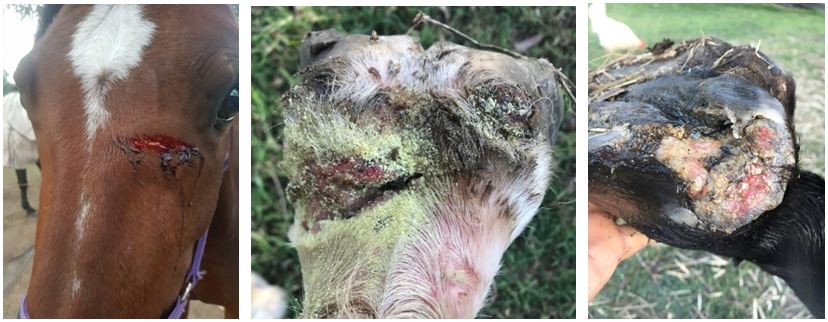
In the intricate world of equine health, injuries and wounds are unfortunate yet inevitable aspects of a horse’s life. Among the various types of wounds, Level 3 wounds stand out as significant challenges, demanding careful attention, prompt intervention, and specialized care.
Recognizing the gravity of these wounds is crucial for horse owners, caretakers, and equine health professionals, as the timely and appropriate response can significantly impact the healing process and long-term well-being of the horse.
This article serves as a guide in recognizing and effectively managing Level 3 wounds in horses.
Key Signs in Identifying Level 3 Wounds in Horses
- Depth of the Wound
- Visible Tissue Damage
- Excessive Bleeding
- Pain and Discomfort
- Abnormal Swelling
- Altered Range of Motion
- Visible Foreign Objects
- Changes in Behavior
- Foul Odor
First Aid Techniques
- If the wound is large enough to require bandaging, or needs protection from flies while it heals, apply Golden Honey Healing Ointment, cover the area to be bandaged with cotton wool / gauze padding and then bandage with Vet Wrap, Light Rip or Elastoplast.
- Generally if you’ve got to the wound quickly and done a good job of cleaning and bandaging, then it’s better to leave the bandage in place for 2-3 days at a time to give it time to work on the healing process undisturbed.
- To maximise the healing process, wash the wound with Colloidal Silver, not water, when changing the bandage.
- Make sure to check the bandages twice daily though and if they’ve slipped at all take them off and redo them.
- Check regularly how the wound smells as this is a good indicator of whether it’s healing well, or needs attention. If it smells bad, then remove the bandage immediately, check for any reason for the smell such as debris not removed properly, clean the wound and reapply dressing.
- Colloidal Silver is good to add to their feed while they are mending as it helps to raise their immunity, and acts as an antibacterial booster. 60- 100 ml twice per day in their feed will help promote the healing and reduce infection.
Deeper cuts may require vet attention for debriding (cleaning the surface of dead tissue) or stitching prior to ointment application and bandaging. If you have any concerns with the wound, if it’s a puncture wound near a joint, or if it smells bad, then definitely call your vet.
CONCLUSION
In conclusion, properly handling Level 3 wounds in horses is crucial for their well-being and recovery. By following the steps outlined in this article, horse owners and caretakers can effectively address these serious injuries with confidence and care. Remember to stay calm, assess the situation thoroughly, and seek professional veterinary assistance when necessary. With the right knowledge and preparation, you can provide your horse with the best possible first aid treatment in times of need.
